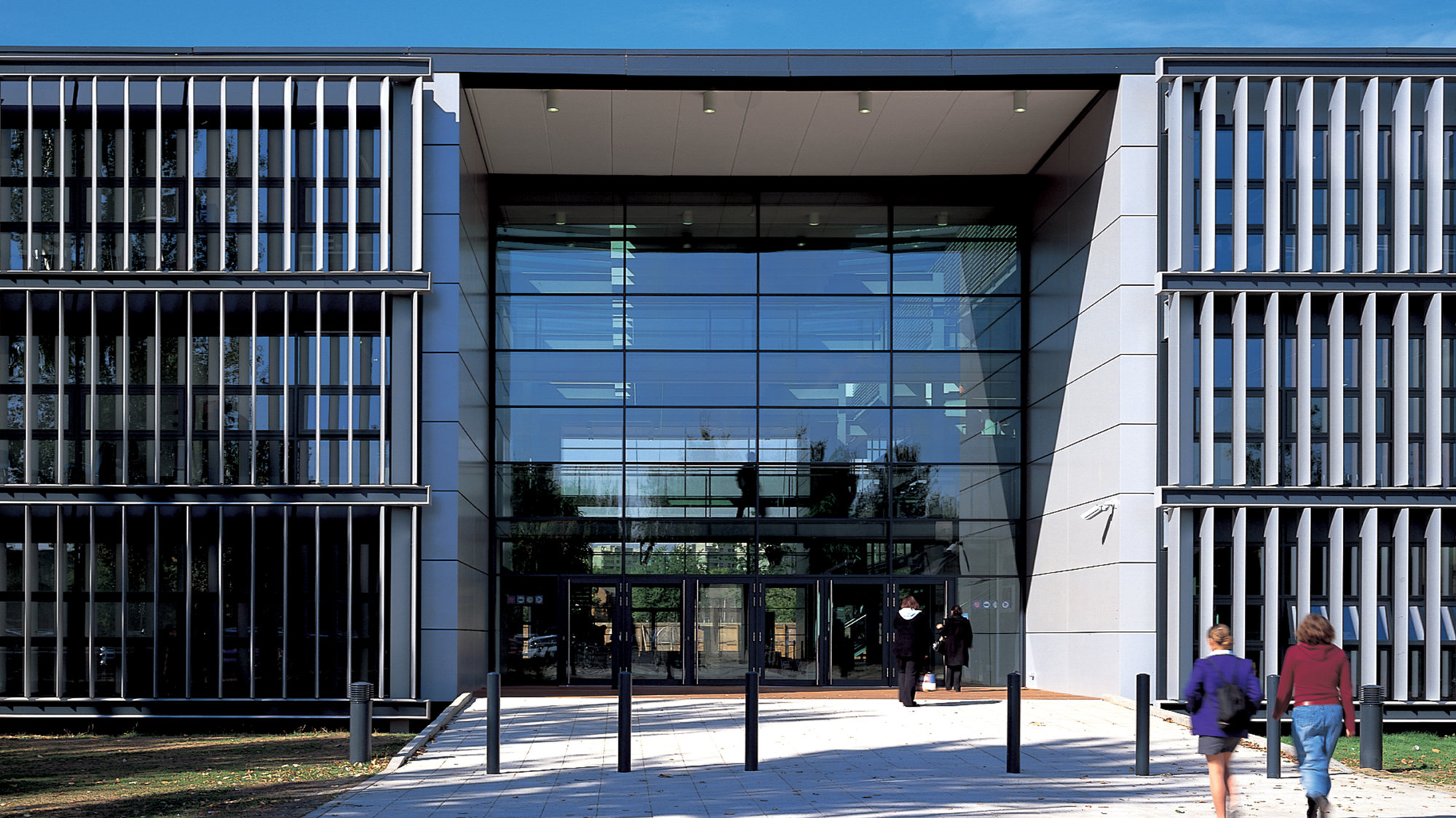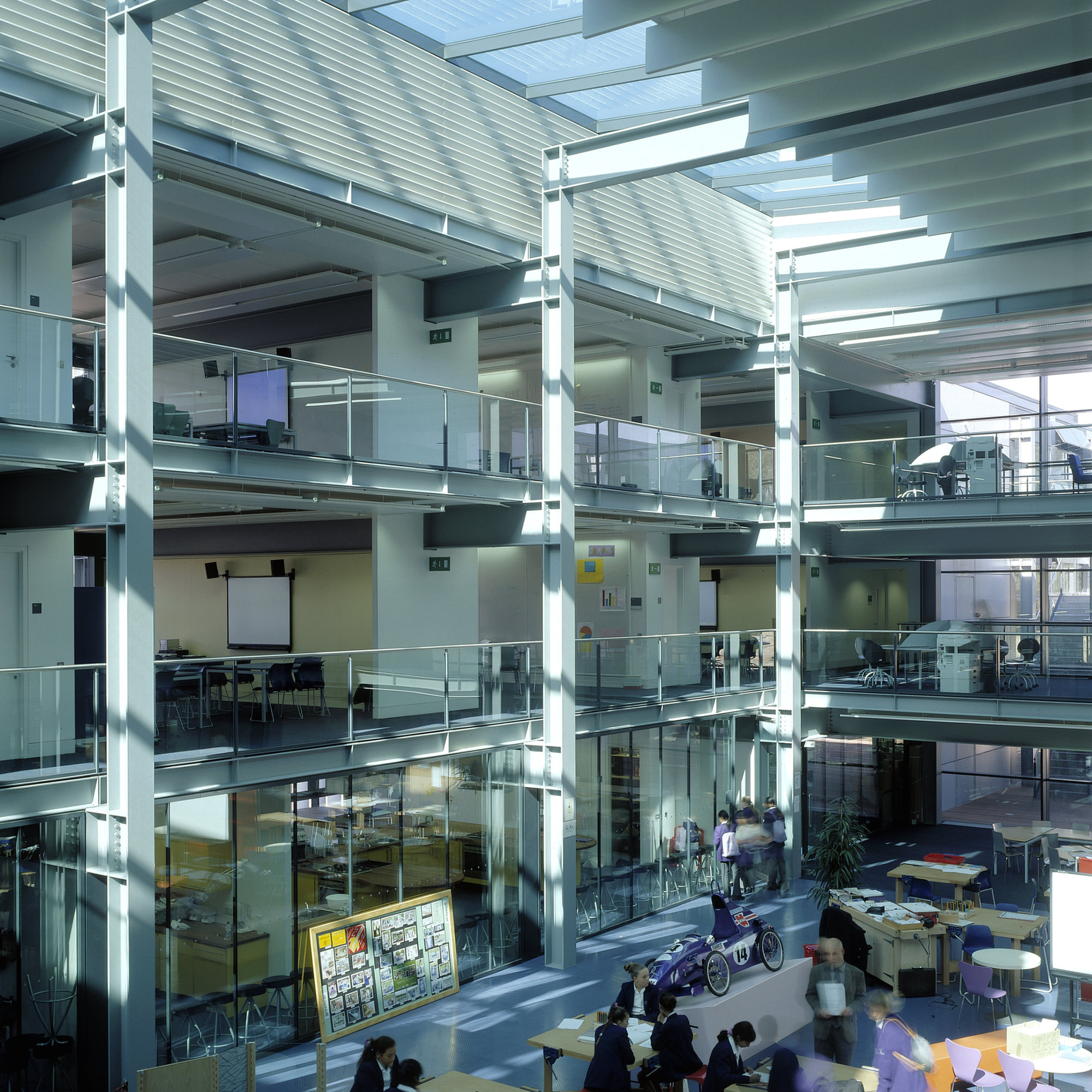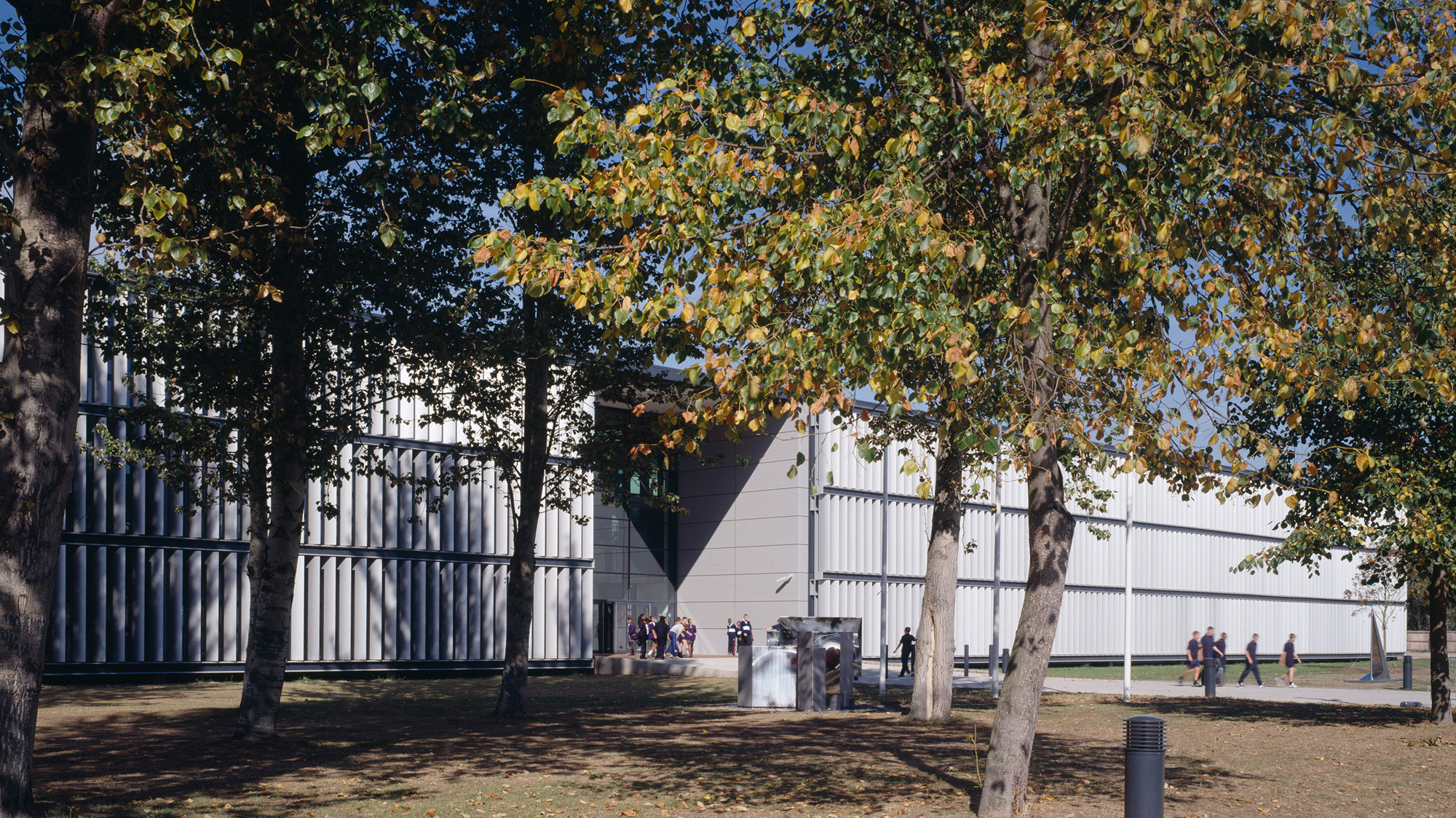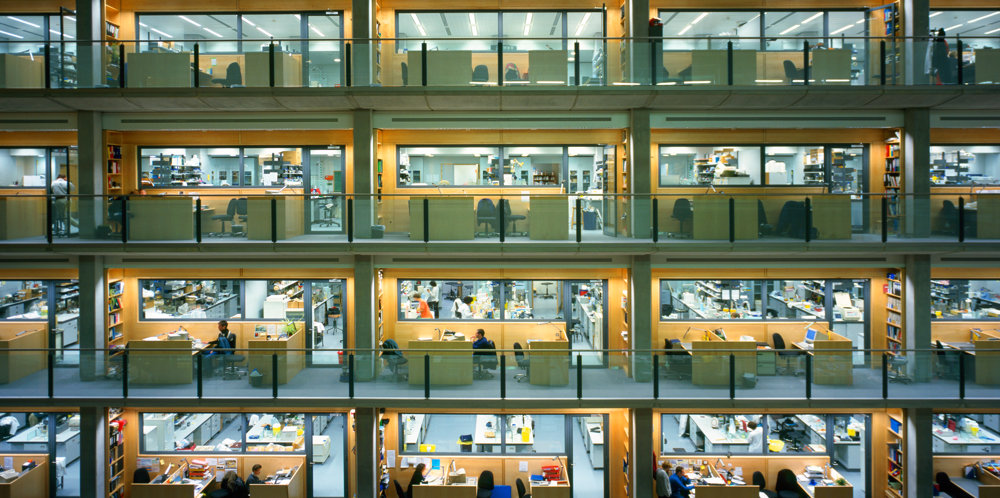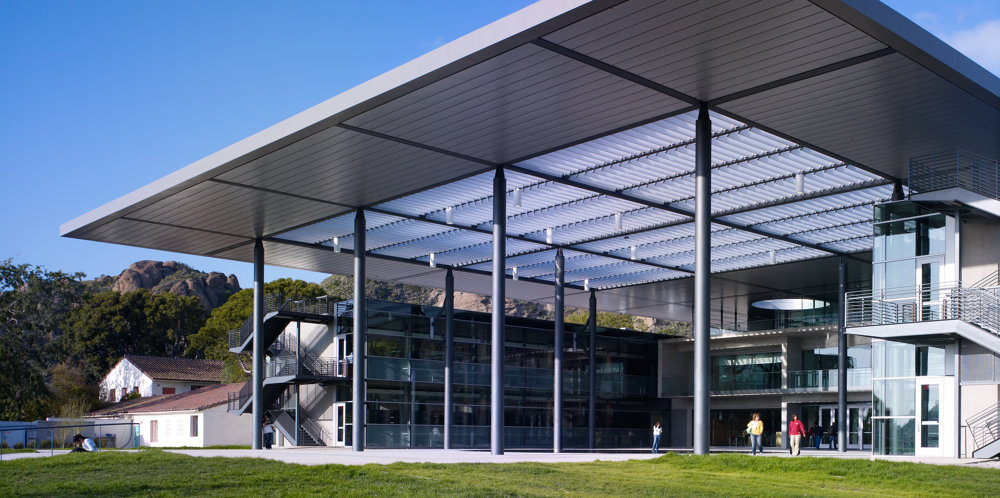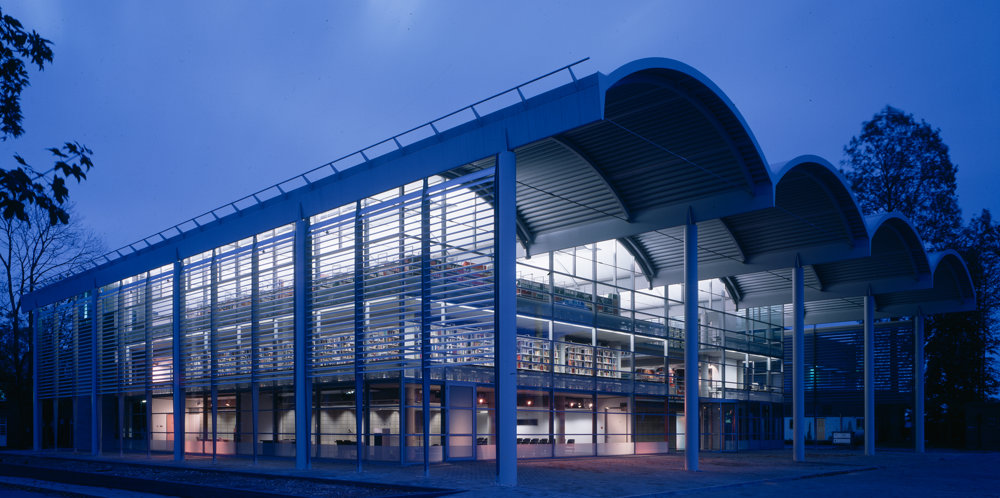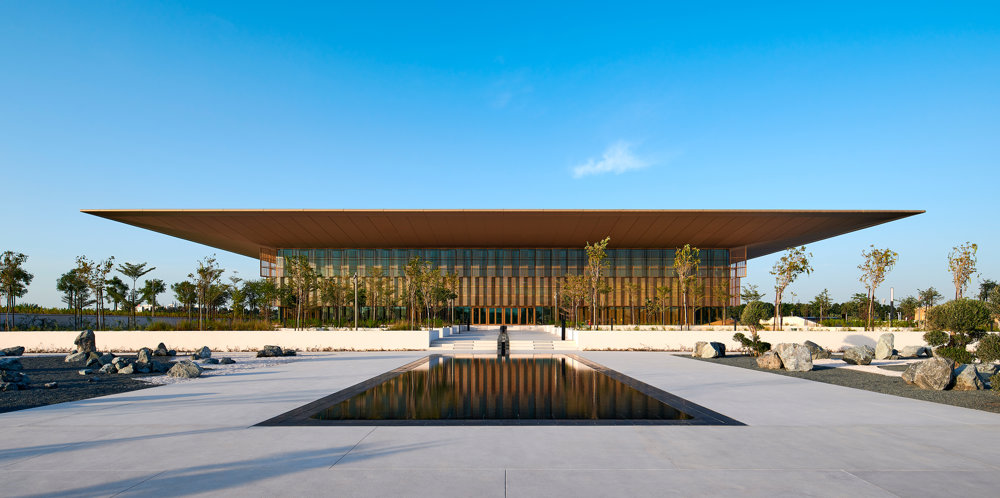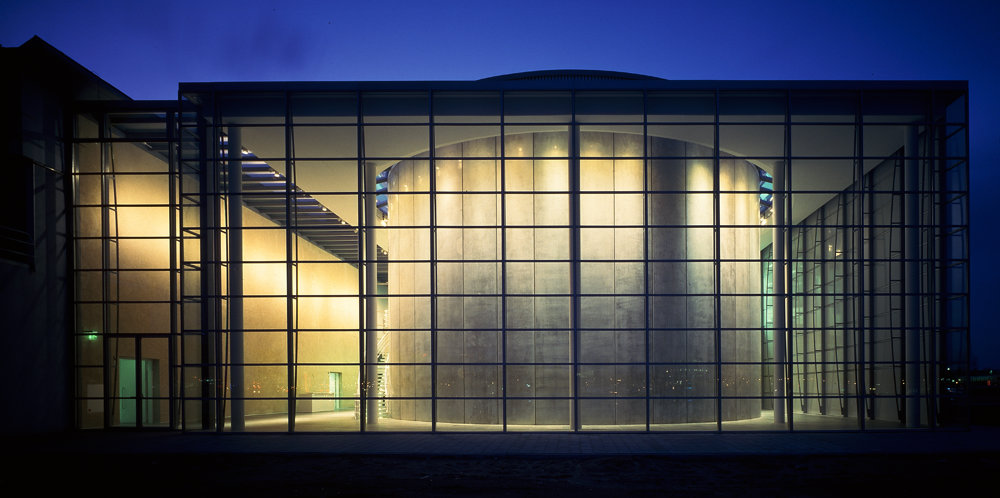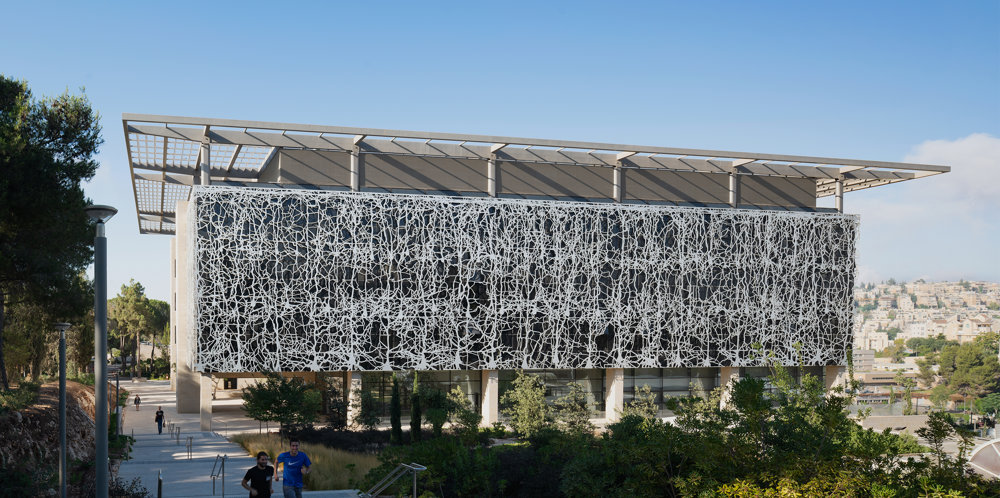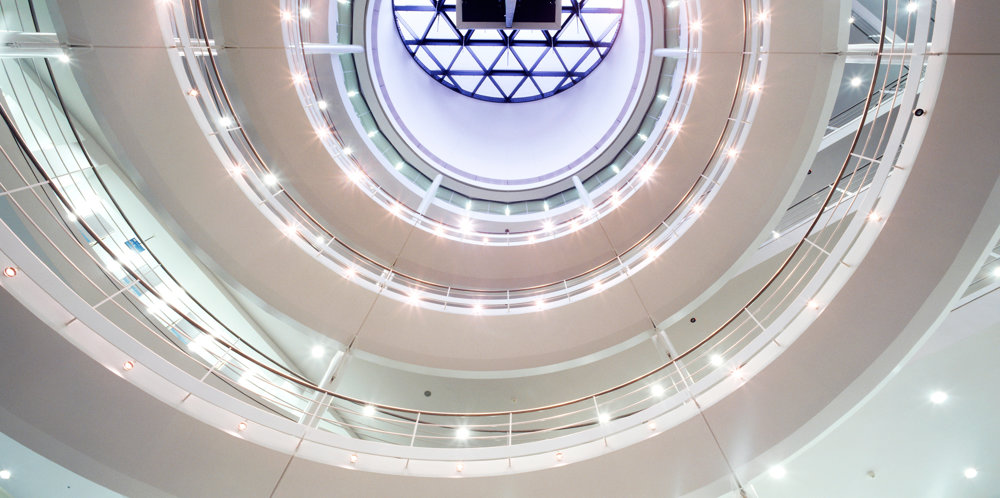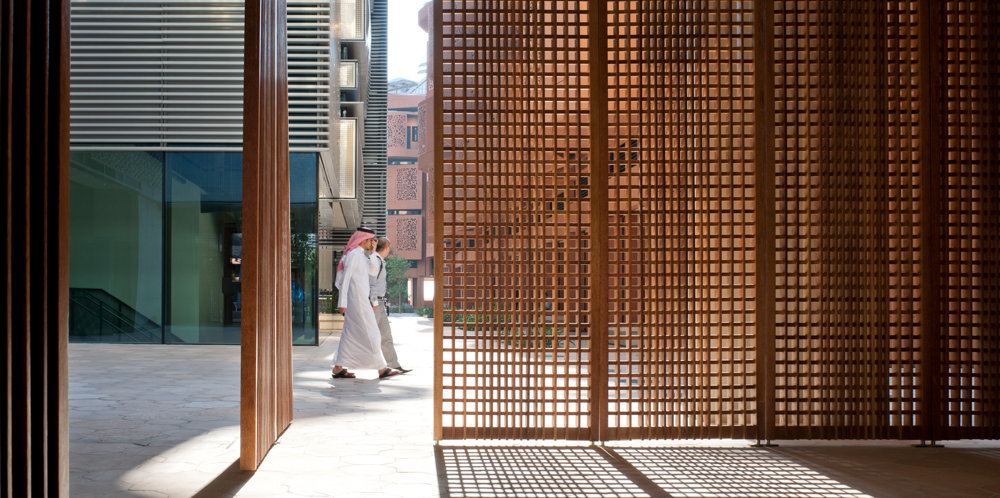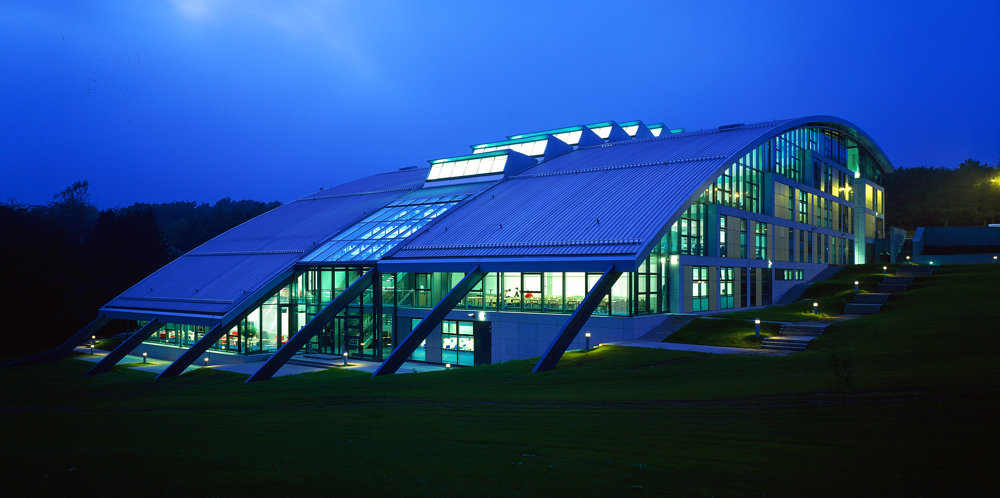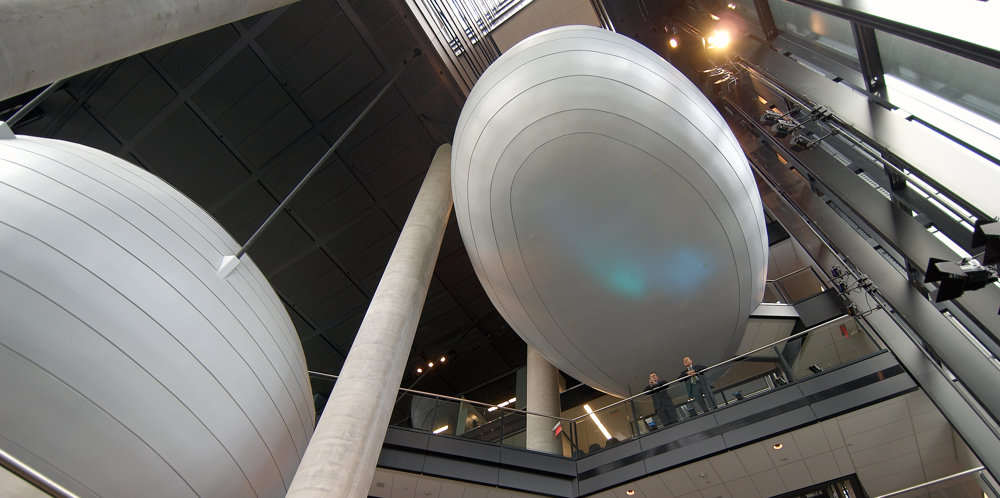The Business Academy Bexley was the flagship Academy for the Labour government’s school building initiative, which was launched in 2000. Typically found in deprived inner-city areas, academies are part financed by the private sector and were intended to transform failing schools, taking them out of local authority control. These social and educational aims have been supported by a radical rethink of traditional school design, creating buildings that are open to the community and highlight the academy’s specialist subject areas.
Bexley applied the philosophy of the practice’s office buildings, which pioneered the humanisation of the workplace in the early 1970s, to the design of a business academy that would engender a sense of community and institutional pride. The curriculum places particular emphasis on business, art and technology, driven in part by Bexley’s entrepreneurial sponsors. Within the building the different subject areas are the focus of three light-filled internal courtyard spaces. Three levels of classrooms are arranged around the courtyards, maintaining a visual connection across the thematic zones and allowing natural supervision. On the upper levels, some of the spaces are open on one side to create flexible, screened teaching areas within the larger volume.
The business theme continues with a miniature stock exchange, complete with plasma screens, which gives students a taste of trading – strengthening Bexley’s connection with the towers of Canary Wharf, which are visible further along the River Thames. Forging close links with the local community, the Academy’s sports hall with climbing wall, restaurant, recording studios and state-of-the-art lecture theatre are all available for out-of-hours use or hire. The open, compact design reduces energy demand and motorised louvres enclosing the double-layered east and west façades automatically track the sun’s path to provide the optimum shade and light. In addition, the majority of teaching spaces are naturally ventilated. Constructed using fast-track steel and pre-cast components, the first phase was opened twelve months after appointment, with the second phase open a year later.









